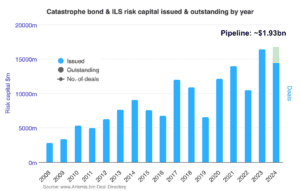DOL's Rollover Reckoning Opens Doors for Advisors

What You Need to Know
Beginning July 1, advisors recommending rollovers will have to document and prove that clients will be better off after the move.
The new regulation may put a damper on the workarounds many advisors use to manage clients’ employer-held retirement accounts,
Advisors will be challenged to adopt new solutions for managing, monitoring and trading client assets.
The Department of Labor’s (DOL) enforcement of Prohibited Transaction Exemption (PTE) 2020-02, creates new challenges that many advisors will face when considering rollover advice for retirement accounts. For well-positioned advisors, however, the new PTE presents a significant opportunity to stand out in the marketplace, build trust and manage their clients’ retirement wealth more holistically.
On February 1, the department began enforcing compliance with the Impartial Conduct Standards, the policies and procedures requirements and most disclosure requirements.
On Friday, it will begin enforcing the documentation and disclosure requirement to provide the specific reasons why a rollover is in the best interest of the participant. The rule clarifies how advisors should offer guidance on their clients’ retirement accounts when conflicted advice is given (e.g., to roll over), as well as how and when they can collect fees for that work.
The spirit of the fiduciary rule potentially pushes advisors away from making recommendations for many investments if they lack the ability to monitor the client accounts where those investments are held and if the participant lacks the knowledge to prudently monitor the investments or allocations.
Effective Friday, the rule will also challenge the de facto method of causally recommending that participants roll over employer-sponsored retirement accounts when clients retire. While rolling these accounts over makes sense for many clients as they enter the distribution phase, the rule challenges advisors to document and prove that these investments will be better off being rolled over (and that any additional expenses are justified).
The Problem With Stopgap Advice During Clients’ Earning Years
To the detriment of their clients, some advisors today see advising on assets that are held at retirement plan recordkeepers as more trouble than it’s worth. However, Russell Investments’ 2022 Value of an Advisor study found that professional management of accounts can add up to 4.9% in additional annual returns. Compounded over time, that can significantly improve an individual’s financial situation.
Understanding this, many advisors utilize workarounds to manage clients’ retirement accounts, such as asking clients to place trades themselves or storing credentials for individual accounts to place trades on behalf of their clients.
These approaches both carry risk for advisors. Those who store client credentials must subject themselves to time-consuming and costly custody audits and run the risk of losses due to a data breach, including potential reputational damage.
Others who provide advice without placing trades fail to provide clients with truly holistic wealth management. Those advisors may lack insight into plan investment details, options, and fees, resulting in sub-optimal recommendations.
In addition, when they rely on the client to place trades, the recommendations may not be implemented. And without regular monitoring of the account, clients could make catastrophic changes rooted in emotion during periods of high volatility.
Both ERISA’s fiduciary rule and the new DOL rule increase the risk of utilizing these stopgap approaches. The PTE explicitly requires that advisors and institutions “carefully consider whether certain investments can be prudently recommended to the individual Retirement Investor in the first place without ongoing monitoring.”
This means that advisors should have the means to analyze plan investment documentation, including for opaque private funds, and also have the ability to continuously monitor their recommendations once made.






